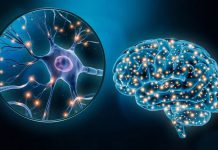Scientists at Indiana University School of Medicine have been investigating how microglia (immune cells in the brain) relate to a gene mutation found in patients with Alzheimer’s disease patients, according to Science Daily.
The study, published in Science Advances, found that the mutation of the gene ABI3 significantly increased the accumulation of amyloid-beta plaque in the brain and decreased the amount of microglia around the plaques.
Lead author HandeKarahan said, “This study can provide further insight into understanding the key functions of microglia contributing to the disease and help identify new therapeutic targets.”
Based on her human genetics research, Karahan identified the mutation in the ABI3 gene and explained that this mutation increased the risk of late-onset Alzheimer’s.
She said, “However, there was no investigation into the function of the ABI3 gene in the brain or about how this gene affects microglia function.”
Conducting a study in a mouse model, the researchers deleted the ABI3 gene from mice with Alzheimer’s disease and tested the functions of the gene in microglia in cell cultures.
The team saw increased levels of plaques and brain inflammation with signs of synaptic dysfunction, which are associated with learning and memory deficits of Alzheimer’s.
Karahan explained that the deletion of the gene impaired the movement of microglia. The accumulation of amyloid plaques is commonly found in the brains of patients with Alzheimer’s. The plaques clump together and destroy nerve cell connections.
Karahan said, “Our study provides the first in vivo functional evidence that the loss of ABI3 function may increase the risk of developing Alzheimer’s disease by affecting amyloid beta accumulation and neuroinflammation.”
The researchers received three separate funds supporting the study from the National Institute on Aging, the National Institutes of Health (NIH) branch for Alzheimer’s research, resulting in $7.8 million over the next five years, per Science Daily.
Another lead author Jungsu Kim said, “One grant will fund the creation of a mouse model that will allow us to delete the ABI3 gene in any cell types in the body, such as brain microglia and peripheral immune cells.”
“Once we validate this new model, we will make it available to others in the research community to use this model for their own investigations,” he added.























